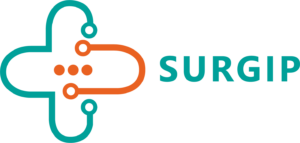An OR scheduling application is not just a technological tool; it is the cornerstone of efficiency and excellence in modern healthcare management. Have you ever wondered how operating room schedules are meticulously crafted to optimize resources and prioritize patient care? In this comprehensive guide, we delve into the transformative power of OR scheduling applications, exploring key features, implementation challenges, and future trends that are reshaping the landscape of healthcare scheduling. Join us on a journey to discover how the right OR scheduling application can revolutionize your healthcare facility's operations and elevate the standard of patient outcomes.
The Evolution of OR Scheduling Solutions
Operating room (OR) scheduling has long been a complex and challenging aspect of healthcare management. Traditional methods often led to inefficiencies, scheduling conflicts, and wasted resources. However, the introduction of OR scheduling applications has transformed the way healthcare facilities manage their surgical appointments.
Traditional OR Scheduling Challenges:
-
Manual scheduling processes prone to errors and oversight
-
Difficulty in managing last-minute changes and emergencies
-
Limited visibility into OR utilization and resource allocation
Introduction of Technology in Healthcare:
The healthcare industry has witnessed a significant shift towards leveraging technology to improve operational efficiency. OR scheduling applications have emerged as a game-changer, offering innovative solutions to streamline scheduling processes and enhance overall productivity.
Benefits of Implementing OR Scheduling Application:
-
Improved coordination and communication among healthcare teams
-
Enhanced OR utilization leading to increased patient throughput
-
Real-time updates and notifications for schedule changes
-
Seamless integration with electronic health records (EHR) for comprehensive patient management
As healthcare facilities embrace the use of advanced OR scheduling applications, they are better equipped to optimize their resources, reduce wait times, and deliver superior patient care. Stay tuned as we delve deeper into the key features and benefits of these transformative solutions in the upcoming sections.
Key Features of an Advanced OR Scheduling Application
In the realm of modern healthcare management, state-of-the-art technology plays a pivotal role in enhancing operational efficiency and patient care. When it comes to OR scheduling, advanced applications offer a myriad of features designed to streamline processes and optimize resource utilization.
Real-Time Scheduling Capabilities:
-
Instant visibility into OR availability and upcoming appointments
-
Dynamic allocation of time slots based on real-time updates
-
Ability to accommodate urgent cases and reschedule appointments seamlessly
Integration with Electronic Health Records (EHR):
-
Seamless access to patient records, medical histories, and treatment plans
-
Automatic syncing of scheduling changes with patient information
-
Enhanced data security and compliance with healthcare regulations
Customizable Alerts and Notifications:
-
Personalized notifications for surgical teams, staff, and patients
-
Automated reminders for pre-operative instructions and post-operative care
-
Alerts for equipment availability, maintenance schedules, and procedural updates
Reporting and Analytics Tools for Performance Tracking:
-
Comprehensive data insights on OR utilization rates and efficiency metrics
-
Customizable reports for trend analysis and performance benchmarking
-
Predictive analytics to forecast demand and optimize resource allocation
By leveraging these advanced features, OR scheduling applications empower healthcare facilities to operate more effectively, reduce wait times, minimize scheduling conflicts, and ultimately enhance the overall patient experience. Stay tuned for insights on how these features drive efficiency in healthcare settings.
Improving Efficiency and Cost-Effectiveness in Healthcare Settings
The seamless operation of healthcare facilities relies on efficient workflow processes, optimized resource utilization, and timely patient care. Through the implementation of advanced OR scheduling applications, healthcare providers can significantly enhance their operational efficiency and cost-effectiveness.
Streamlining Workflow Processes:
-
Automated scheduling to reduce manual errors and save time
-
Improved coordination among surgical teams, nurses, and support staff
-
Seamless integration with other hospital systems for streamlined workflow
Reducing Wait Times for Patients and Staff:
-
Prioritization of urgent cases for prompt treatment
-
Minimization of patient wait times in pre-operative and post-operative phases
-
Efficient allocation of resources to minimize idle time and maximize utilization
Optimizing Resource Allocation:
-
Real-time tracking of equipment availability and usage
-
Efficient assignment of staff based on skill sets and availability
-
Data-driven decisions for resource allocation and capacity planning
Enhancing Overall Operational Efficiency:
-
Enhanced communication and collaboration among healthcare teams
-
Improved patient satisfaction through reduced wait times and streamlined processes
-
Cost savings through optimized resource utilization and reduced operational inefficiencies
The utilization of OR scheduling applications revolutionizes the way healthcare facilities manage their schedules, leading to improved efficiency, cost-effectiveness, and ultimately, better patient outcomes. Explore how these applications drive success in healthcare settings by optimizing processes and enhancing overall productivity.
Overcoming Implementation Challenges of OR Scheduling Applications
Implementing a new technology solution in a healthcare setting comes with its own set of challenges. However, with careful planning, strategic approaches, and a clear understanding of the key implementation challenges, healthcare facilities can successfully integrate and leverage OR scheduling applications to drive efficiency and improve patient care.
Staff Training and Onboarding:
-
Comprehensive training programs to familiarize staff with the new scheduling application
-
Ongoing support and resources for staff to address any training gaps or challenges
-
Tailored training sessions for different user groups to ensure smooth adoption
Data Migration and System Integration:
-
Secure and seamless transfer of existing scheduling data to the new application
-
Integration of the OR scheduling application with other hospital systems such as EHR and billing software
-
Testing and validation of data integrity post-migration to avoid discrepancies
Ensuring Compliance with Regulatory Requirements:
-
Aligning the OR scheduling application with healthcare regulatory standards and protocols
-
Regular audits and checks to ensure data privacy and security compliance
-
Collaboration with IT and compliance teams to address any regulatory concerns proactively
External Link:
For more insights on overcoming implementation challenges in healthcare technology adoption, refer to HealthIT.gov.
By tackling these implementation challenges head-on, healthcare facilities can successfully deploy OR scheduling applications to optimize their operations, improve efficiency, and provide high-quality care to patients. Stay tuned for strategies on how to navigate through these challenges effectively and maximize the benefits of these innovative solutions.
The Future of OR Scheduling: Trends and Innovations
As technology continues to advance at a rapid pace, the future of OR scheduling is poised for significant transformations. Emerging trends and innovations in the healthcare industry are reshaping the way OR scheduling applications operate, offering new possibilities for improved efficiency and patient care.
AI-Powered Scheduling Algorithms:
-
Utilization of artificial intelligence to optimize OR schedules based on historical data and predictive analytics
-
Dynamic adjustment of schedules in real-time to accommodate changes and optimize resource allocation
-
Improved accuracy and efficiency in scheduling, resulting in reduced wait times and enhanced operational performance
Virtual Reality Simulations for OR Planning:
-
Integration of virtual reality technology to simulate surgical procedures and plan OR layouts
-
Enhanced training opportunities for surgical teams through realistic simulations and scenario-based learning
-
Visualization of complex procedures and spatial arrangements for better planning and coordination
Predictive Analytics for Demand Forecasting:
-
Leveraging data analytics and machine learning algorithms to forecast future demand for OR resources
-
Anticipating peaks and troughs in surgical volumes to optimize staffing and resource allocation
-
Strategic planning based on predictive insights to enhance operational efficiency and minimize scheduling conflicts
External Link:
For a deeper dive into the role of predictive analytics in healthcare forecasting, explore IBM Watson Health.
By embracing these cutting-edge trends and innovations, healthcare facilities can revolutionize their OR scheduling processes, drive efficiency, and deliver exceptional care to patients. Stay ahead of the curve by exploring these futuristic approaches to OR scheduling and harnessing the power of technology for improved healthcare outcomes.
Choosing the Right OR Scheduling Application for Your Healthcare Facility
Selecting the most suitable OR scheduling application for your healthcare facility is a critical decision that can impact operational efficiency, patient outcomes, and overall satisfaction. By considering key factors and utilizing a strategic approach, healthcare providers can identify the ideal solution that aligns with their specific needs and enhances their scheduling processes.
Assessing Specific Needs and Requirements:
-
Conducting a thorough evaluation of current scheduling challenges and pain points
-
Identifying key features and functionalities required for efficient OR scheduling
-
Engaging stakeholders from various departments to gather diverse perspectives and insights
Vendor Selection Criteria:
-
Researching reputable vendors with a proven track record in healthcare technology solutions
-
Evaluating vendor capabilities, customer reviews, and case studies for insight into application performance
-
Requesting demonstrations and trials to experience the application firsthand and assess usability
Implementation Strategies for Smooth Transition:
-
Developing a detailed implementation plan with clear timelines, responsibilities, and milestones
-
Assigning a dedicated project team to oversee the deployment and integration of the scheduling application
-
Providing comprehensive training and support resources for staff to facilitate smooth adoption and minimize disruptions
External Link:
For insights on best practices in healthcare technology procurement, visit Cerner Corporation.
By carefully navigating the selection process and aligning the chosen OR scheduling application with the unique needs of your healthcare facility, you can drive efficiency, optimize resource utilization, and deliver exceptional patient care. Stay tuned for expert tips on how to maximize the benefits of your chosen solution and enhance operational effectiveness in your OR scheduling processes.
FAQs
How does an OR scheduling application improve efficiency in healthcare settings?
An OR scheduling application enhances efficiency by automating scheduling processes, reducing errors, optimizing resource allocation, and providing real-time visibility into OR availability and appointments.
What features should I look for when selecting an OR scheduling application?
Key features to consider include real-time scheduling capabilities, integration with EHR systems, customizable alerts and notifications, and robust reporting and analytics tools for performance tracking.
How can healthcare facilities overcome implementation challenges when adopting an OR scheduling application?
Healthcare facilities can overcome implementation challenges through comprehensive staff training, seamless data migration and system integration, and ensuring compliance with regulatory requirements through collaboration with IT and compliance teams.
What are the future trends in OR scheduling applications?
Future trends include the use of AI-powered scheduling algorithms for optimization, virtual reality simulations for OR planning, and predictive analytics for demand forecasting to enhance resource allocation and operational efficiency.
How can I ensure a successful transition to a new OR scheduling application?
Successful transition involves assessing specific needs, selecting a reputable vendor, developing a detailed implementation plan, providing adequate training, and assigning a dedicated project team to oversee the deployment process.

